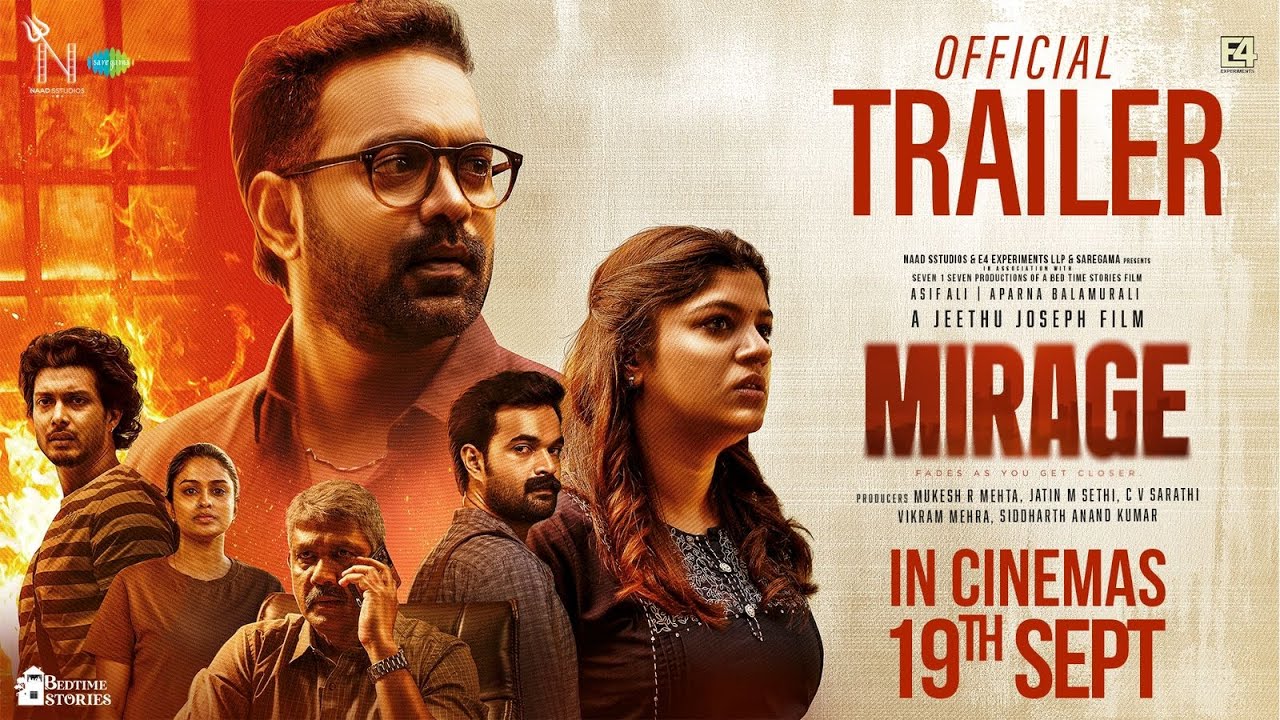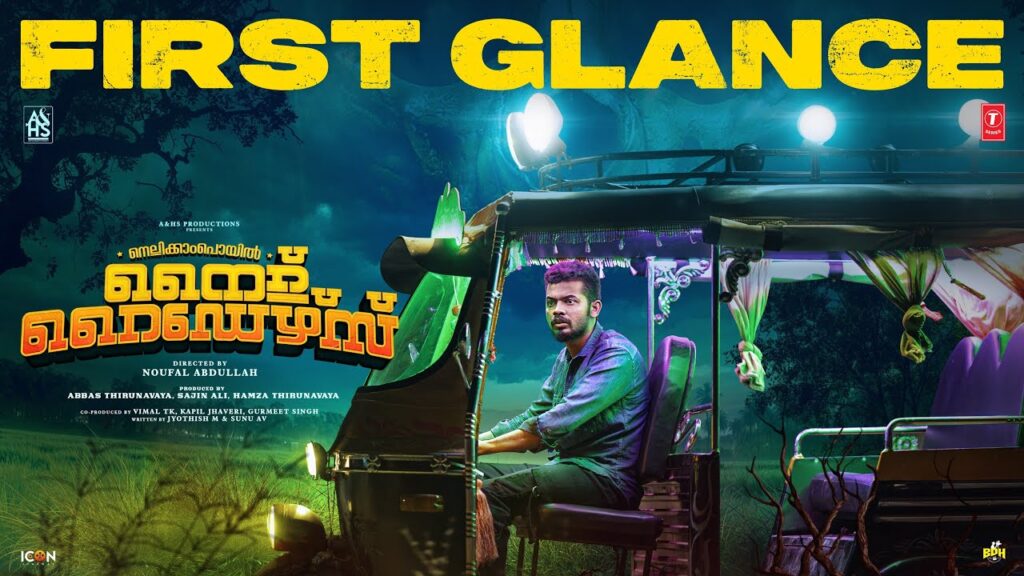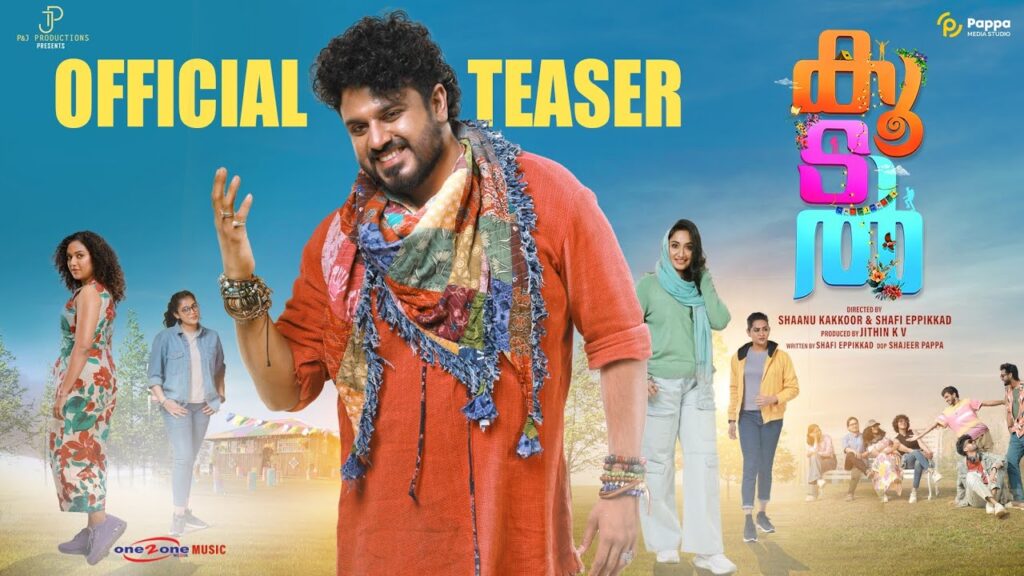Mirage Movie 2025 Bapamtv Review Details
Mirage (2025) — Cinematography & Visual Effects Deep Dive
Mirage (2025), directed by Jeethu Joseph, is a Malayalam crime thriller that leans heavily on visual storytelling to build mood and tension.
This review focuses on the film’s cinematography, camera techniques, lighting, color grading, and the role of visual effects in shaping the narrative experience.
Quick Movie Details
| Title | Mirage (2025) |
|---|---|
| Director | Jeethu Joseph |
| Cinematographer | Satheesh Kurup |
| Editor | Vinayak |
| Music | Vishnu Shyam |
| Genre | Crime Thriller / Noir |
Visual Tone and Color Palette
Satheesh Kurup and the camera team establish a muted, noir-inspired palette that suits the film’s themes of mistrust and surveillance.
Cool blues, desaturated neutrals, and deep shadows are used to create a chilly atmosphere that keeps viewers on edge throughout the investigative beats.
Lighting as Storytelling
Lighting choices in Mirage function almost like a character — selective highlights reveal truths while deeper shadows obscure motives.
Indoor interrogation scenes use tight, directional lighting to isolate faces and intensify emotional micro-expressions, enhancing drama without heavy melodrama.
Camera Movement & Framing
Kurup’s framing favors mid-shots and close-ups during emotional beats, drawing attention to actors’ subtle shifts in expression and fostering intimacy.
When the plot leans into suspense, handheld movement and slight dutch tilts inject instability, a visual cue for the audience that a shift is coming.
Lens Choices and Depth of Field
The film alternates between shallow focus to emphasize character isolation and wider lenses for exposition and environment, balancing intimacy with context.
Close-ups of Abhirami and Aswin benefit from a narrow depth of field that separates them from the morally ambiguous world around them.
Composition and Production Design Synergy
Frames are meticulously composed — cluttered backgrounds when deceit is present, cleaner lines when a character attains clarity or confidence.
The production design teams complement the cinematography by dressing sets with visual clues that the camera lingers on, aiding narrative economy.
Use of Practical Effects and In-Camera Tricks
Jeethu Joseph’s team prefers practical approaches where possible — reflections, glass panes, and foreground objects are used to build layers and hide clues.
These in-camera tricks give Mirage an organic texture that VFX alone often struggles to replicate, and they help sell emotional beats convincingly.
Visual Effects: Subtlety Over Showiness
The visual effects in Mirage are primarily invisible — used to augment reality rather than dominate it.
VFX assists in seamless scene transitions, digital cleanup, and a few composited background extensions that make locations read as larger without calling attention to themselves.
VFX Breakdown — Key Sequences
Digital enhancements appear in flashback reconstructions and discreet surveillance montages where layered screens and data overlays support the investigative theme.
These VFX elements are functional: they communicate information clearly and maintain the film’s grounded tone without drifting into spectacle.
Editing and Visual Rhythm
Vinayak’s editing shapes the visual rhythm; longer takes build tension while quicker cuts accelerate discovery sequences and the film’s momentum.
Although some critiques note that excess twists slow pacing, the editing generally preserves visual clarity during complex revelations.
Sound Design Complementing Visuals
Though not the primary focus here, sound design works hand-in-glove with visuals: ambient texture and low-frequency cues amplify the visual suspense.
Vishnu Shyam’s score often underscores visual reveals, making camera-driven reveals land with greater impact.
Comparative Assessment: Industry Standards
Against contemporary crime thrillers, Mirage’s visual approach favors mood and texture over high-end VFX spectacle seen in larger-budget productions.
Within the Malayalam industry and similar regional thrillers, the film stands out for production polish and crafted camera work that competes favorably with recent benchmark films.
Examples of Effective Visual Choices
Sequence framing during the train accident flashback uses tight, claustrophobic lenses to evoke panic and confusion, an effective visual mirror of the character’s trauma.
Surveillance montage scenes blend practical footage with tasteful overlays, communicating the digital stakes without confusing the viewer.
Where the Visuals Could Have Pulled Harder
At times the overuse of twist-revealing close-ups and repeated low-light setups reduces the uniqueness of certain beats.
A leaner approach in the second act might have preserved tension better and allowed visuals to surprise more often rather than feel familiar.
Technical Awards Potential
Mirage is a credible contender for regional awards in cinematography and production design due to Satheesh Kurup’s disciplined palette and framing choices.
VFX and editing may earn technical nods where invisible VFX, compositing, and sound design are appreciated for their narrative service rather than flash.
Impact on Audience Experience
For viewers who value textured visuals and camera-led suspense, Mirage delivers memorable frames and effective visual motifs that linger after the credits.
Those expecting high-octane visual effects or rapid-fire action might find the film’s visual rhythm more meditative and character-focused.
Final Visual Verdict
Mirage is visually accomplished: polished cinematography, purposeful lighting, and understated VFX bolster its strengths as a character-driven thriller.
While narrative excess sometimes dulls the impact of individual reveals, the film’s camera work and design consistently elevate the material.
Star Rating
★★★★☆ (3.5 / 5)
Disclaimer: Rating may vary based on personal taste and critical perspective.
Quick Reference Table — Visual Highlights
| Aspect | Highlight |
|---|---|
| Color Palette | Noir-inspired, desaturated tones |
| Lighting | Directional, mood-led, chiaroscuro elements |
| Camera Work | Mix of handheld, tight close-ups, and composed wide frames |
| VFX | Invisible compositing, surveillance overlays, flashback cleanups |
| Editing | Rhythmic cuts; pacing uneven at times |
| Award Potential | Strong for cinematography & production design |










